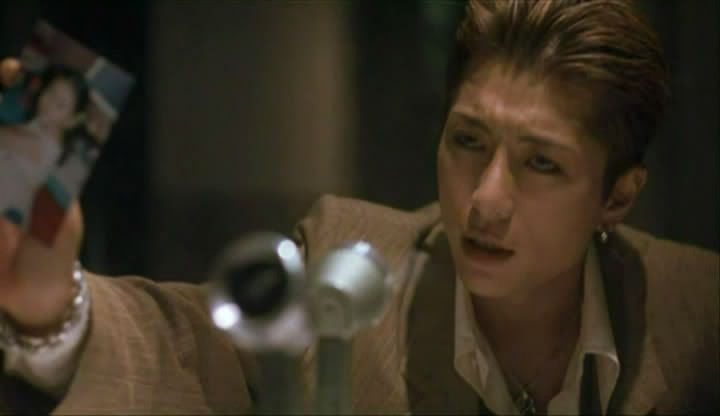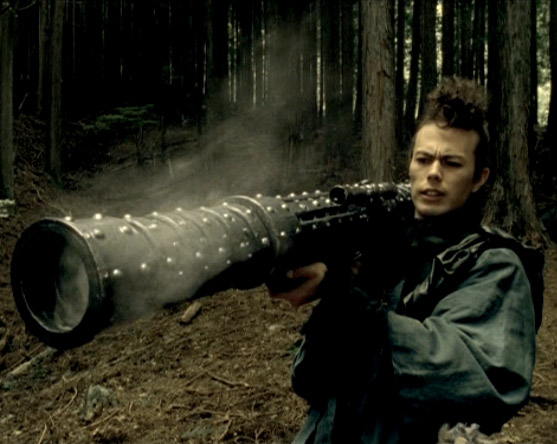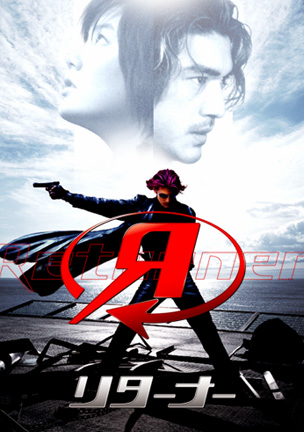In the future, the human race is nearly extinct because of a war against an alien species. Scientists narrowed down a date and location where the event might have occurred that sparked this war. Milly (Anne Suzuki), a young resistance fighter is in the middle of her mission briefing when the aliens find the base and massacre her comrades. Milly narrowly escapes through a time portal to modern day Japan where she encounters a vigilante named Miyamoto (Takeshi Kaneshiro) also known as the Returner. It is up to Milly and the Returner to save the future by finding a way to stop the war before it starts.
While it may be true that the trope of "alien invaders show up and destroy earth" is not all that inventive,
Returner adds an element of originality by placing a greater emphasis on its characters and the relationships between them. Indeed, this is a very character driven science fiction movie which is not the norm for this genre. This fact ties into a revenge subplot involving Miyamoto and Mizoguchi (Goro Kishitani) who serves as the movies primary antagonist. It might seem a little hackneyed at times but the script does an admirable job of combining Milly's story and Miyamoto's story into one cohesive, compelling narrative. This is further aided by the fact that Mizoguchi's most prominent character trait is his ambition which quickly, but believably elevates him from a petty crook to a crime boss that endangers the world.
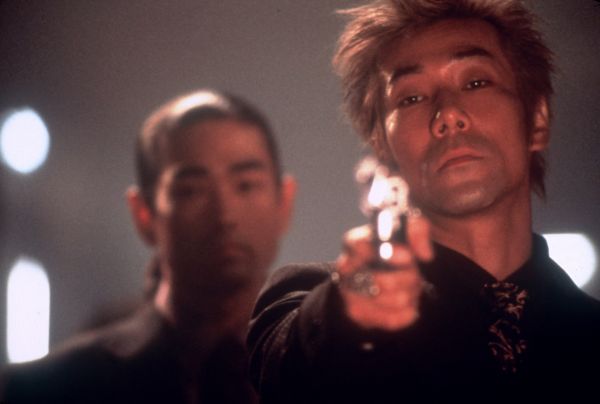
The science fiction setting isn't done in an overly indulgent manner. There aren't any floating cars or flying motorcycles, or photon torpedoes. Apart from the time portal and a watch that can slow down time for a few seconds the technology here isn't too far removed from what we have today. The technology isn't merely there mind you - it does serve an actual purpose, but it's not the major focus of the scenes which are largely there to develop the characters and plot. Of note is that the opening scene takes place in the future but the rest of the movie, with the exception of a flashback or two, takes place in modern day Japan. There are a wide variety of settings that fit the story well. Miyamoto encounters Mizoguchi on a ship where the latter is doing business, there is a large dining room when Mizoguchi is meeting with the other crime lords, and there is an oil rig where the final showdown takes place. The appearance of an aerospace technologies lab fits right in and is an important setting the brings the two extremes of Returner together. With that said it bears mentioning that it is the fantastic writing which allows all of this to happen.
The enmity between Mizoguchi and Miyamoto could make a very good stand alone action film while Milly’s quest to save the world would make a good movie or anime. An impromptu quantum leap of sorts lands Milly in the very center of the conflict between Mizoguchi and Miyamoto and while it seems that she brings the problems of her future with her, she actually discovers the origins of the crisis through her interaction with these characters.

The characters and scenarios are written more realistically than one might expect for a typical sci-fi movie. Characters don't easily adjust to the events that happen around them. Also, there are no heroes in this story - in other words there are no individuals who are selflessly dedicated to a particular cause, rather we are seeing characters that are almost real people. The pressure of having to save the world does at times look to be more than what Milly is able to handle. Also, the more time she spends in the present the less inclined she feels to return to the future where things are not so great, to say the least. Miyamoto doesn't believe that Milly is from the future or that there is an alien invasion as he is far more concerned with taking revenge on Mizoguchi. Mizoguchi himself is only interested in getting to the top of the criminal underworld. None of the characters are archetypes taken to an extreme.
The script is also true to the personality of the characters themselves. Milly and Miyamoto don’t fall in love with one another simply because they are the male and female leads which in most other movies would be a substantial subplot. However, they simply do not identify with each other on those levels. They do grow closer together but not in a way that would be typical of Western cinema. The animosity between Miyamoto and Mizoguchi is the driving force of this film and the tension it carries throughout is there until the very last draw.
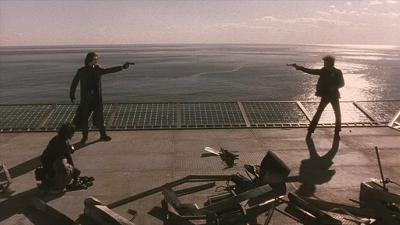
Our three stars played their roles with expert finesse. Takeshi Kaneshiro is not new to the business and has starred in films since 1993 so even in 2002 he was a seasoned pro. His performance in Returner is widely believed to be one of his best roles. He really expresses that anger and hatred his character has for Mizoguchi but not in the traditional, cinematic verbals. Rather, it is in the non-verbals such as his facial expressions and eyes that speak more than words could. Goro Kishitani displays adequate range as Mizoguchi but it almost seems as though he's playing himself given how cool and laid-back Kishitani is known to be in real life. He does a brilliant job turning Mizoguchi into a villain you just love to hate while at the same-time bringing out qualities of style and cunning reminiscent of classic Bond villains. Anne Suzuki was simply amazing. Her voice work in anime has always been critically acclaimed and she brings that experience to this live-action role. Suzuki's performance really gave the impression that Milly had the weight of the world on her shoulders, she conveyed the frustration and at times hopelessness of this character, and at other times really brought out the heart which complimented Miyamoto's character and kept him going. Suzuki really brought out Milly's supportive side even while the character herself was one in very much need of the same relief she gave to others.

A great deal of attention was paid to the plot and how to make it all fit together. The creators were able to artistically and seamlessly blend the sci-fi story and the revenge story together into a cinematic good time. The characters also benefited from being able to have much of the spotlight all to themselves. Milly, Miyamoto, and Mizoguchi were given the time to develop as individual characters, and interact with one another without being overshadowed by special effects or a convoluted story-line which is unlike most other movies in this genre.
Although Returner was different from what I expected, I had a good time watching this. Each of the characters were appealing in their own way and really left an impression on me, while the plot admirably wove together two dissimilar stories into a convincing narrative. True, it may not appeal to those looking for an action packed movie or those seeking a traditional science fiction movie. However, what is here is a highly entertaining story, great characters, and an ending that really stayed with this viewer. It's not the best sci-fi action movie out there but it doesn't have to be. It's an enjoyable film that still holds up after more than a decade.
- Jetstream Rev


